We Know You Love Birds but Spare a Thought for Everyone’s Favourite Prickly Visitor – the Hedgehog
Here at Johnston & Jeff, we’re all about wildlife. That’s why we couldn’t resist bringing you an article about that wonderful little garden visitor, the Hedgehog.
There are 17 species of Hedgehog across the world, but the one that you might see in your garden at night is the west European Hedgehog, scientific name Erinaceus europaeus. This lovely garden visitor is Britain’s only spiny mammal and sports a highly specialised coat that contains around 6,000 spines. Beneath the spines, Hedgehogs have greyish fur on the underside of their bodies, as well as surprisingly long legs and a short tail.
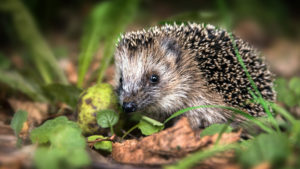
Believe it or not, Hedgehogs are actually distant relatives of shrews. They evolved around 15 million years ago and have changed little since. They are often found in a variety of environments both urban and rural, but not on moorlands or wetlands.
Sadly, however, this garden favourite was officially classed as vulnerable in 2020 as numbers have been declining recently. As a result, it is imperative that those of us who care for wildlife do everything we can to protect this spiky little character. One of the best ways to do this is to provide them with protection in the form of a Hedgehog House.
Safe Place
Although Hedgehogs have few predators, they still need protection from the elements and from the local neighbourhood cats. Badgers and foxes also have been known to occasionally try their luck with a Hedgehog, too.
So, placing a Hedgehog home in a quiet corner of your garden will give them a safe place to go to in the daytime, until they can come out and feed under the cover of darkness, and serve as a haven during hibernation.
What Makes a Good Hedgehog Home?
If you’re going to the trouble of providing a house for Hedgehogs, there are a few things to bear in mind.
Firstly, the house should be made of strong, thick materials as this will ensure it is robust enough to last through the bad weather and will be sufficiently insulated to keep its occupants warm through the winter months.
A front porch on the house enables Hedgehogs to find their way through to the nesting area more easily and gives added protection against predators and bad weather. The floor should be left open as this will encourage natural nesting and foraging behaviour.
Check out our cosy Hedgehog House here, made by expert craftspeople in our Yorkshire workshop!
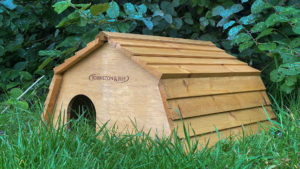
For extra protection, site your Hedgehog House in a quiet, shady location in your garden such as under a hedgerow or in a shrubbery, and place foliage, stones, or other heavy objects on top. This has the double-benefit of providing extra protection against predators, as well as increased insulation.
Leave Some Areas of Your Garden Wild
Hedgehogs love to snuffle through the undergrowth for insects and providing such an environment will not just keep them well fed, but happy doing what they love to do.
In fact, creating wild areas in your garden isn’t just good for Hedgehogs. The insects that live there will also attract birds, making it a haven for wild creatures of all types.
Also, try to avoid or minimise the use of chemicals, such as slug pellets, in the places in your garden Hedgehogs can access. The simple fact is some of these garden chemicals can poison Hedgehogs, making them very ill or worse.
When do Hedgehogs Hibernate?
As with other animals, Hedgehogs derive their energy from food. Throughout the colder months their food source, which mainly consists of worms, insects, and beetles, becomes harder to find. Therefore, they choose to preserve their energy by hibernating.
Whilst precise timings depend on the weather, in a particularly cold period Hedgehogs tend to begin their hibernation process in November or December and will usually emerge around March or April.
Remember, Remember Wildlife in November!
Most Hedgehogs will start looking for their perfect hibernation spot towards the end of Autumn, so this is one of the best times to put out your Hedgehog House, if you haven’t already. However, be careful, if they don’t have a house to go to, they often find other places to hibernate, and this can put them in danger. So, two things you must always do are:
Never light a bonfire without checking
Most of us love a good fire. And mostly, that takes place in the autumn and winter months when we’re cleaning up the garden rubbish or celebrating Bonfire Night. However, a pre-built bonfire could look like the perfect winter hibernation place to a Hedgehog and often, they will crawl in, roll into a cosy ball and go to sleep.
So, always, always, always check for Hedgehogs under a bonfire before you light it. Once you put a match to the fire, it is too late.
Be careful with composts heaps too
Just as Hedgehogs will sometimes take up residence in an unlit bonfire, so they will in a compost heap. So, if you’re digging compost or forking it over, always check for these prickly friends first.
Never Move a Hibernating Hedgehog
If you find a Hedgehog that is hibernating in what appears to be a dangerous place, or somewhere that is just inconvenient, avoid the temptation to move it. A Hedgehog that is woken from hibernation will use up vital body fats it needs to sustain it through its sleep. Waking it might leave it short of the energy it needs.
If you accidentally wake a Hedgehog that is hibernating, cover it up with a thick, cosy layer of dry leaves. Also, leave some wet dog or cat food out, or some Hedgehog food, along with some water near the nest, so if the Hedgehog doesn’t go back to sleep straight away, it has something to eat and drink to replace vital energy before it does.
What to Feed Hedgehogs
Hedgehogs have a very varied diet. They are opportunistic eaters and will feast on anything from insects to fallen fruit and even carrion. As a result, they will happily tuck into a number of different treats.
Putting out a bowl of wet dog or cat food will help them gain vital weight and body fat for hibernation. Dried Calciworms are also a great food for Hedgehogs due to the fact they are an excellent source of insectivorous protein and high in calcium.
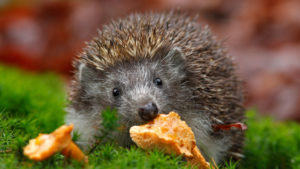
If you sit quietly, you can also watch them eat without scaring them, which is a treat for you too!
A bowl of water is a great thing to put out, but don’t be tempted to feed milk or bread. Hedgehogs are lactose intolerant so cannot digest milk and bread can swell in their stomachs, causing real problems.
What Should I do if I Find a Hedgehog in the Day?
Hedgehogs are nocturnal creatures. They feed at night and sleep in the day. So, if you find one wandering around your garden in the daytime, there is a high probability something is wrong.
In event of this, pick the Hedgehog up with gardening gloves to avoid being pricked and put it in a cardboard box. If you have some straw, put that in the box and perhaps some meaty food and a bowl of water. Then contact a local wildlife centre and either take it there or ask them to come and collect it.
The only exception to this is in high summer when the females have young. Sometimes, they will leave the nest in the daytime to get extra food for their hoglets. However, these will tend to look bright, active, and healthy. If this is the case, leave her alone as removing her will cause her young to starve.
Also, if you see a healthy Hedgehog wondering around your garden at night, watch them by all means, but don’t pick them up or otherwise interfere with them. You may scare them, and they might return straight to a place of safety rather than continue looking for food, which could mean they go hungry.
Do Hedgehogs Carry Fleas?
The short answer to this is yes, Hedgehogs do carry fleas. However, they are host specific. The type of fleas that live on Hedgehogs can only live on Hedgehogs, not cats or dogs, so no family pets will pick them up.
A bigger issue is ticks. Hedgehogs do suffer from tick infestations. Ticks that are attached to the Hedgehog tend to look like small, silvery grey balls. One or two won’t cause Hedgehogs any problems, but a lot can lead to anaemia.
Don’t try to remove ticks because often the head is left behind and that can cause infection. Also, be careful not to get any on yourself. When they’re not full of blood, ticks are very small and easy to miss and they can carry Lyme Disease, a bacterial infection that can result in a number of nasty symptoms. So, always ensure you’re wearing gloves if handling a Hedgehog and check your hands, forearms and any other parts of exposed skin for ticks after handling one.
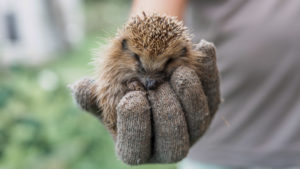
Enjoy these Wonderful Garden Visitors!
So, now you know all you need to know about attracting these wonderful little creatures to your garden and keeping them safe. As long as you stick to the tips outlined in this article, you’ll always avoid getting into a prickly situation with one of UK’s best loved animals!
Our recent posts giving advice and guidance on wild birds
Ground Nesting Birds
Ground Nesting Birds In an earlier article, we looked at nesting behaviour in wild birds and how you could use this knowledge to encourage birds to nest in your garden. In that article we talked about birds that nest in [...]
Incredible Journeys – Bird Migration Explained
Reading Time: 11 minutes While many species of bird make the UK their home all year round, some just visit for the summer or winter months and then head off to distance shores for the rest of the year. In this blog, we examine bird migration, taking a deep look into one of nature’s most spectacular phenomena to find out more about what makes it possible.
A Guide to Greenfinches
Reading Time: 9 minutes Greenfinches might not have the range of colours of their Goldfinch cousins, but they are still have a spectacular plummage. They are also viewed as one of the best starter birds you can buy by many aviary keepers because they tend to be fairly hardy, have a good song, and don’t have any specific needs that require the management of an experienced keeper.








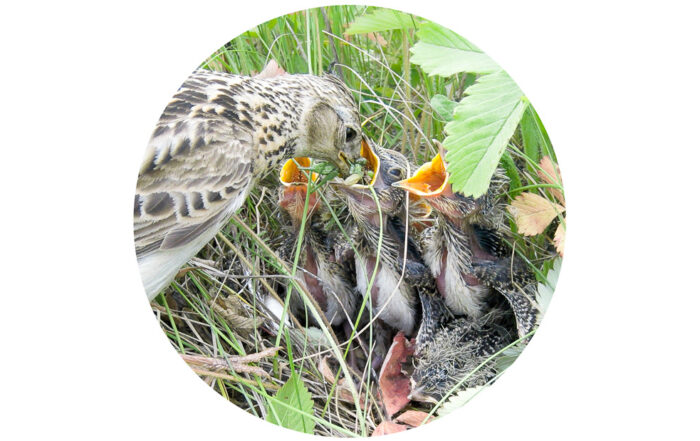

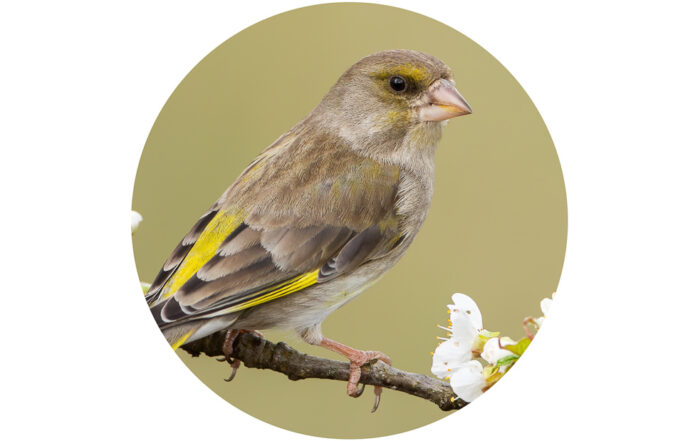
Leave A Comment